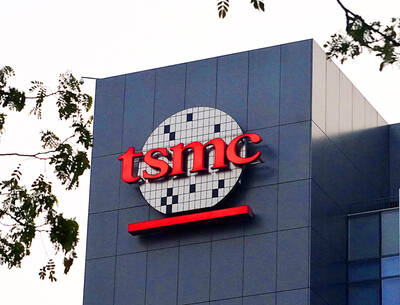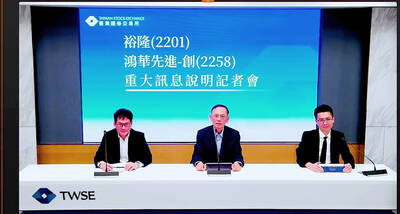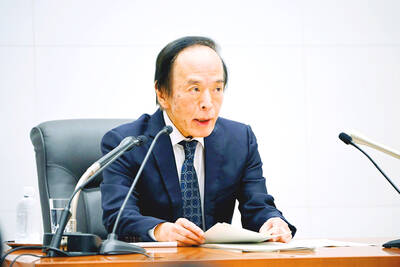There are signs that apparel orders might increase as lockdowns in the US and Europe eased over the past few weeks, which would lead to a faster-than-expected recovery for Makalot Industrial Co (聚陽), Nomura International (Hong Kong) Ltd Taipei Branch said in a note on Thursday.
Based on Nomura’s supply-chain checks and considering the apparel industry’s order visibility, demand for casual clothes and fashionable sportswear is likely to increase from the third quarter rather than later in the year as it previously expected, the brokerage said.
Makalot — a manufacturer of ready-to-wear apparel with global brand clients including GAP Inc, Fast Retailing Co’s GU sub-brand, Kohl’s Corp, Target Corp, Walmart Inc and Hanesbrands Inc — on May 14 reported that pretax profit in April fell 11.1 percent annually to NT$89.29 million (US$2.97 million).
Revenue declined 37.71 percent to NT$1.13 billion in April, the lowest since November 2013, as clients deferred orders due to the COVID-19 pandemic.
“We believe the weak April sales should mark the bottom, followed by a modest recovery in May and June. We believe monthly sales should accelerate further every month from the third quarter because we see a gradual easing of lockdowns in major US cities, which will likely boost end demand,” Nomura analyst Lee Shao-tang (李紹唐) said in the note, adding that US sales accounted for more than 70 percent of Makalot’s sales last year.
“Following COVID-19, we see an uptick in demand and rush orders from June for isolation gowns, which carry higher margins and should bring revenue upside in the near term,” Lee said.
The company has transferred some of its production to special protective gowns to help meet soaring demand for those that have P3 particulate filters, Makalot chairman Frank Chou (周理平) told local media in March.
Shipments of higher-margin protective gowns began at the end of last month and are forecast to make up 5 to 10 percent of the company’s sales, Makalot said.
“We expect Makalot’s year-on-year sales decline to shrink from 27 percent in the second quarter to 8 percent in the third quarter, suggesting 50 percent quarter-on-quarter growth. The sales recovery is faster than our previous expectation of late 2020,” Lee said.
However, the faster-than-expected recovery just reflects clients’ confidence in restocking inventories and not a rebound in real end demand, which would be more easy to gauge with clearer signs in the next few months, he said.
Moreover, based on market conditions, Target and GU might be the only brands among Makalot’s major clients to post year-on-year growth this year, while business for other brands, including GAP, Walmart and some department store clients, would likely remain challenging this year, Lee said.
In the first four months of this year, Makalot’s pretax profit dropped 11.12 percent year-on-year to NT$673.58 million, or earnings per share of NT$3.06, while combined revenue decreased 14.93 percent to NT$7.26 billion, company data showed.

Taiwan’s long-term economic competitiveness will hinge not only on national champions like Taiwan Semiconductor Manufacturing Co. (TSMC, 台積電) but also on the widespread adoption of artificial intelligence (AI) and other emerging technologies, a US-based scholar has said. At a lecture in Taipei on Tuesday, Jeffrey Ding, assistant professor of political science at the George Washington University and author of "Technology and the Rise of Great Powers," argued that historical experience shows that general-purpose technologies (GPTs) — such as electricity, computers and now AI — shape long-term economic advantages through their diffusion across the broader economy. "What really matters is not who pioneers

In a high-security Shenzhen laboratory, Chinese scientists have built what Washington has spent years trying to prevent: a prototype of a machine capable of producing the cutting-edge semiconductor chips that power artificial intelligence (AI), smartphones and weapons central to Western military dominance, Reuters has learned. Completed early this year and undergoing testing, the prototype fills nearly an entire factory floor. It was built by a team of former engineers from Dutch semiconductor giant ASML who reverse-engineered the company’s extreme ultraviolet lithography (EUV) machines, according to two people with knowledge of the project. EUV machines sit at the heart of a technological Cold

TAIWAN VALUE CHAIN: Foxtron is to fully own Luxgen following the transaction and it plans to launch a new electric model, the Foxtron Bria, in Taiwan next year Yulon Motor Co (裕隆汽車) yesterday said that its board of directors approved the disposal of its electric vehicle (EV) unit, Luxgen Motor Co (納智捷汽車), to Foxtron Vehicle Technologies Co (鴻華先進) for NT$787.6 million (US$24.98 million). Foxtron, a half-half joint venture between Yulon affiliate Hua-Chuang Automobile Information Technical Center Co (華創車電) and Hon Hai Precision Industry Co (鴻海精密), expects to wrap up the deal in the first quarter of next year. Foxtron would fully own Luxgen following the transaction, including five car distributing companies, outlets and all employees. The deal is subject to the approval of the Fair Trade Commission, Foxtron said. “Foxtron will be

INFLATION CONSIDERATION: The BOJ governor said that it would ‘keep making appropriate decisions’ and would adjust depending on the economy and prices The Bank of Japan (BOJ) yesterday raised its benchmark interest rate to the highest in 30 years and said more increases are in the pipeline if conditions allow, in a sign of growing conviction that it can attain the stable inflation target it has pursued for more than a decade. Bank of Japan Governor Kazuo Ueda’s policy board increased the rate by 0.2 percentage points to 0.75 percent, in a unanimous decision, the bank said in a statement. The central bank cited the rising likelihood of its economic outlook being realized. The rate change was expected by all 50 economists surveyed by Bloomberg. The